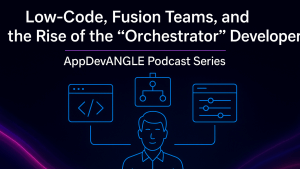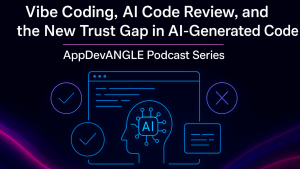ABSTRACT: A clear theme emerged at AWS Summit New York: AI agents are redefining how enterprises build and operate software. AWS showcased new capabilities including Bedrock Agent Code for secure large‑scale agent deployment workflows, expanded Nova models with multimodal and browser‑interaction features, and SageMaker Catalog enhancements that act as a semantic control plane. AWS S3 vector buckets and Iceberg‑ready storage signal a shift from traditional storage to AI‑integrated data platforms. With AWS Transform accelerating modernization of .NET, VMware, and mainframe workloads, organizations can confidently migrate faster and adopt agentic frameworks. The ecosystem is growing rapidly, as partners like Accenture, Deloitte, and TCS leverage AWS AI marketplaces and frameworks to help enterprises move from POC to production. Vendors across storage, networking, and compute, such as Snowflake, Databricks, Dell, HPE, NetApp, and Supermicro, face rising pressure to deliver metadata‑rich, AI‑ready platforms. AWS’s open approach positions it as a next‑generation cloud and data innovation leader.
At the recent AWS Summit in New York, the overarching theme was a decisive shift toward agentic AI systems and the supporting cloud infrastructure that enables them. Discussions throughout the event emphasized how Amazon Web Services (AWS) is weaving together a broad ecosystem of services, tools, and partnerships to empower organizations to build, deploy, and operate intelligent agents at scale. The summit also served as a stage for AWS and its partners to articulate a vision in which data platforms, storage, networking, and compute converge to support AI-driven operations.
AI Agents as a Fundamental Shift
One of the most significant developments showcased was the introduction of AI agents as autonomous systems capable of reasoning, planning, and adapting to dynamically complete tasks. These agents are not simply pre‑defined workflows but are designed to interact with other systems and adjust their behavior in real time. This represents a fundamental rethinking of how software will be architected and operated. Rather than monolithic applications, organizations will assemble agentic workflows that are both composable and responsive, driving higher productivity and innovation. AWS’s leadership in this domain positions it well to define early standards for how these agents are deployed, orchestrated, and managed. One gap for AWS is in the process management and orchestration layer, which is needed to build the agentic workflows. AWS is leveraging and working with GSIs such as Accenture, Deloitte, and TCS to fill this gap. This has allowed those GSIs, and others such as Celonis, to bring their intellectual property to the table for customers.
Amazon Bedrock Agent Code and Secure Scale
AWS further advanced its story with the launch of Bedrock Agent Code, a suite of services enabling secure, large-scale deployment of AI agents. This initiative addresses long‑standing, at least a year, challenges around agent development, including memory management, orchestration across heterogeneous environments, and production hardening. From an analyst perspective, we think Bedrock’s approach could mirror the early success of Kubernetes as a control plane for containerized workloads: it provides an opinionated yet flexible framework to accelerate adoption. Significant difference is that it is a singular cloud only, AWS, where Kubernetes is on-premises, cloud, and edge. That being said, by making agent deployment easier and more secure, AWS is setting the stage for broader enterprise use, especially as organizations look to extend agents across multiple business units and operational domains.
Amazon Nova Models and Specialized Capabilities
Expanding AWS’s model family under the Nova brand underscores the company’s intent to offer a wide range of AI building blocks. Notable highlights included Nova models with multimodal capabilities and customization features, along with Nova Act, an AI model optimized for tasks such as navigating and interacting with web browsers. We think this multi‑modal strategy signals AWS’s recognition that different workloads require different model architectures, and it positions AWS as an aggregator of its models and third‑party options. Importantly, AWS’s willingness to let customers bring in external models like Anthropic’s Claude demonstrates a pragmatic approach that will likely encourage adoption among enterprises that value choice and flexibility. Also in some of the analyst discussions, it was clear that AWS was also looking at models from a cost and size perspective.
AWS Transform and Migration Modernization
A key message at the summit was that AI transformation depends on modernized infrastructure. AWS Transform, a migration and modernization agent, was highlighted as a tool to accelerate movement away from legacy systems, including .NET, VMware, and mainframe environments. We believe using AI in this context, helping automate code analysis, refactoring, and deployment, is a powerful lever to overcome what many enterprises face: POC paralysis. By reducing migration timelines from months to weeks, AWS gives organizations a practical pathway to adopt modern architectures that are AI‑ready. That being said, this is again where the GSIs have much experience. In one discussion with TCS, we got to deep dive on this topic, and it was clear that AWS Transform covers a number of use cases, probably in the 10% range by our estimations.
Data Platforms, Storage, and Emerging Protocols
Conversations at the event also delved into deeper architectural questions, particularly around data platforms and emerging communication protocols. There was extensive discussion of MCP (Model Context Protocol) and A2A (Agent-to-Agent), two open initiatives fostering interoperability between agents and tools, under the Linux Foundation. The industry appears to be coalescing around these protocols, and we think AWS’s contributions to both demonstrate its ongoing commitment to open ecosystems.
AWS’s approach to data was equally noteworthy. The introduction of Amazon S3 vector buckets marks an evolution in object storage, where vector data, critical for retrieval‑augmented generation (RAG) and embedding‑based AI workloads, can be natively stored and tiered. This was the next step in building S3 into a fully capable data platform. Last time we discussed this, we discussed the GA of Amazon S3 Table Buckets. Though understated in its announcement, we believe this feature, S3 vector buckets, signals a future in which storage services become more semantically aware and integrated with AI pipelines. We have questions about the cost and performance of the S3 vector and table buckets, but we know that AWS will work on that in the future. In particular, how moving vectors away from the GPUs and memory and the small file problem with S3.
Meanwhile, SageMaker’s evolving catalog was described as a potential control plane, and a redo of AWS Data Spaces, akin to how vCenter drove VMware’s growth by centralizing integration points. Catalogs are increasingly seen as semantic layers that unify metadata across disparate systems, and AWS appears determined to lead in this space.
AI Innovation Ecosystem and Partner Momentum
Beyond technology, AWS outlined a comprehensive AI innovation ecosystem, including the AWS AI Innovation Center, training initiatives, and a growing AI marketplace. We think this multi‑pronged strategy will help address one of the industry’s most pressing challenges: the shortage of skilled talent capable of deploying AI in production. Large GSIs such as Accenture, Deloitte, and TCS leverage AWS frameworks to accelerate client adoption. Conversations revealed that these partners are building templated solutions and agent frameworks to help organizations move from proof of concept to production in weeks rather than months. We believe this ecosystem effect is critical, as AI adoption often fails not because of technology gaps but because of organizational inertia and a lack of implementation expertise.
Competitive Landscape and Vendor Implications
The summit also sparked discussion about how the broader ecosystem, including storage, networking, and compute vendors, must evolve. The market is witnessing a shift from traditional storage arrays to full-fledged data platforms that integrate with AI frameworks and support open table formats like Iceberg. We see vendors such as Dell, HPE, NetApp, IBM, Oracle, Vast Data, DDN, Supermicro, Hammerspace, Solidigm, Hitachi Vantara, and Nutanix leaning in to transform their offerings to meet the new requirements. We think those vendors that fail to move beyond simple storage functions into metadata‑rich, AI‑integrated platforms will struggle to remain relevant. Conversely, those that align with agentic architectures and embrace open formats are positioned to thrive.
Networking and compute are also in flux, with DPUs and other intelligent NICs becoming critical to managing the massive data flows required for AI. Companies like Cisco, Juniper, Arista, and Extreme are being called upon to provide AI‑ready networks that simplify management through automation and deliver the low‑latency performance agents demand. On the compute side, partnerships with semiconductor leaders and the ability to support heterogeneous accelerators will be differentiators.
Industry-Wide Impact and Outlook
The overarching takeaway from the AWS Summit New York is that AI is no longer an add‑on—it is becoming the defining paradigm for software, infrastructure, and operations. Every vendor positions itself as an AI company, but we believe the winners will be those who build real capabilities rather than merely applying marketing spin. The transition to agentic systems will create winners and losers, particularly among those who can or cannot deliver tightly integrated, metadata‑driven platforms.
We think the implications are broad: database vendors such as Snowflake and Databricks are racing to embed agentic capabilities into their ecosystems, while traditional infrastructure providers must climb the stack to deliver value at the semantic layer. The emergence of federated catalogs and cross‑catalog integrations, exemplified by moves like Salesforce’s interest in Informatica, suggests the market is heading toward a more open, interconnected future.
Our ANGLE
In our view, the AWS Summit New York made it clear that AI is not about chatbots or interfaces and that AI agents are no longer a futuristic concept but a practical framework ready for enterprise deployment. AWS’s blend of embracing open protocols with MCP and A2A, specialized models beyond NOVA, modernization tools with Transform leveraging AI and leaving space for GSIs, and a vibrant partner ecosystem offers organizations multiple on‑ramps to provide those AI agent frameworks into this new paradigm. Yet, challenges remain: security models for agents are still nascent, process orchestration frameworks are immature, the semantic layer is in flux, and the talent gap is real.
With AWS S3 vector buckets and Iceberg‑ready storage, one of the big things we see signals a shift from traditional storage to AI‑integrated data platforms. As we continue the Summer of Data Platforms, we see this trend accelerating as conventional storage platforms, in the cloud and on-premises, collide with data services and data management workflows. The battle of the catalogs and metadata will heat up as the summer continues.
We believe that AWS’s strategy on the AI front of providing both native solutions like Nova and Bedrock and the flexibility to integrate external models positions it uniquely as the “everything cloud.” This approach empowers organizations to experiment and scale confidently, leveraging the best of AWS’s native services and a diverse ecosystem of partners. For vendors and enterprises alike, the message is clear: the era of agentic AI has arrived, and those who adapt quickly to this new model, embracing data platform integration, open protocols, and ecosystem collaboration, will shape the future of cloud computing.
Feel free to reach out and stay connected through robs@siliconangle.com, read @realstrech on x.com, and comment on our LinkedIn posts.



